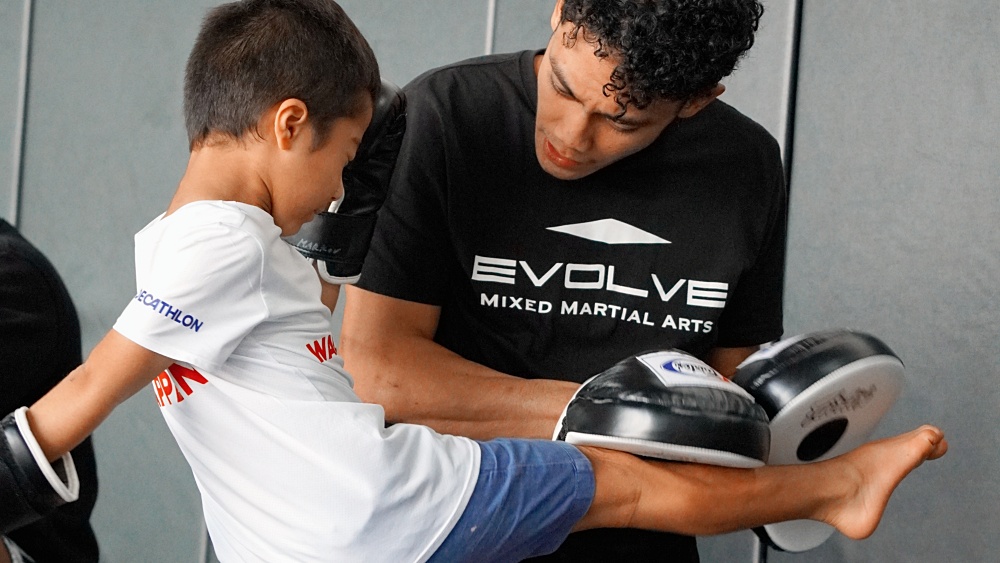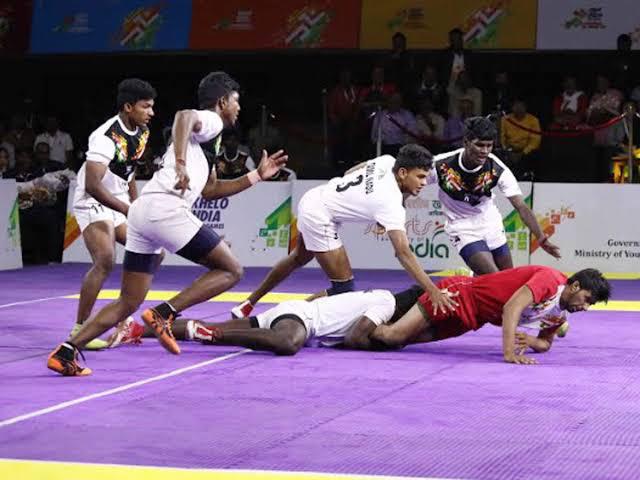Bullying often brings out all sorts of negative emotions in children, and parents usually don’t know how to start the conversation. Children tend to be hesitant to admit they’re getting bullied because it often makes them feel ashamed.
It’s up to parents to learn how to spot the signs, open a judgment-free dialogue, validate their child’s feelings, and gently introduce martial arts as a fun, confidence-boosting activity.
Getting Your Child To Open Up About Bullying And Introducing Martial Arts
Let’s explore the different steps parents should take to get their child to open up about bullying:
1) Recognize The Signs
Make sure you’re seeing the right signals before assuming your child is getting bullied. One in four primary school students in Singapore reported being bullied in 2022. Some of the things parents should look out for include:
- Mood Swings: A bubbly kid suddenly becoming quiet, irritable, or tearful might be getting bullied.
- Avoidance Behaviors: A child coming up with excuses to skip school, change routes, or dodge social events is another major red flag to watch for.
- Unusual Bruises or Scrapes: A child coming home with torn clothes, bruises, or missing belongings is a cause for concern.
- Changes To Sleep Patterns And Appetite: The anxiety caused by bullying often disrupts a child’s eating and sleeping habits.
- Digital Distress: Reluctance to use phones or suddenly deleting social media apps could signify cyberbullying.
Noticing any of these red flags once doesn’t automatically mean a child is getting bullied, but a few of these repeatedly occurring are a strong indicator that your child is getting bullied.
2) Opening The Conversation
Choosing the right moment to talk to your child about what they’re going through can be the difference between getting the generic “I’m fine” and starting a real conversation. Some tips to help determine the ideal moment to broach the topic include:
- Casual Setting: Talking to your child during a casual activity like a car ride or while walking the dog feels less stressful than a conversation at the kitchen table.
- Open-Ended Questions: Swap generic questions like “Did you have a bad day?” for “What was the toughest part of your day?”
- Model Vulnerability: Share an anecdote with the child to let them know they’re not the only person who’s ever been bullied. Share some of the lunch‑tray drama or playground politics you experienced growing up to show them it’s okay to be vulnerable.
- Active Listening: Use eye contact when broaching the topic with your child and help them to reflect by asking open-ended questions like “So you felt left out when…”
3) Validate Their Feelings
Kids need an emotional safe space to open up, so validate their feelings by saying things like, “Anyone would feel upset if that happened.” Resist the urge to quickly offer solutions. Your child wants to feel heard, so let them vent and ask gentle follow-ups like “What went through your mind when that happened?”
4) Teach Healthy Coping Strategies
Small coping tools can make a huge difference when emotions run high. These include:
- Role-Play Responses: Practice calm comebacks your child can use to disarm bullies. Play the bully’s role while your child stands up for themselves with calm responses like “That comment hurt my feelings”—rather than a mean clapback.
- Safe-People List: Identify one or two adults at school whom your child can go to when they’re being targeted.
- Digital Boundaries: Set limits on the use of electronic devices so bullying can’t follow your child everywhere they go.
These tactics won’t necessarily stop a bully, but they’ll encourage your child to stand proud and help keep them centered.
Introducing Martial Arts As A Positive Outlet

Martial arts teaches kids to project confidence through eye contact and posture—making them less likely targets for bullies.
Once you’ve started a conversation about bullying with your child, you can plant the idea of martial arts training as a fun way for your child to learn more skills and also stand up to the bullies. More often than not, kids become targets of bullying because they seem different in certain ways, whether it is their appearance, personality, or even the way they speak. These differences can make them stand out to bullies who are looking for someone they view as vulnerable. But with the right support and tools, children can learn to protect their well being, build resilience, and stand strong.
Why Martial Arts?

Martial arts boosts kids’ confidence, discipline, fitness, and social skills—helping them feel strong, focused, and connected on and off the mat.
Some of the ways martial arts training protects children against bullies include:
- Boost Confidence Through Skill Mastery: Studies show that children who learn martial arts show significant gains in their self-confidence and social skills, and reduced aggression compared to children who don’t train.
- Emphasizes Respect And Discipline: The curriculum of traditional martial arts includes codes of conduct that teach children to respect themselves and those around them.
- Promotes Stress Relief And Mindfulness: Martial arts training tools like katas, shadowboxing, and breathing exercises help children manage their anxiety and focus on the present.
- Physical Health Perks: Martial arts training develops muscle strength, muscle endurance, cardiovascular endurance, flexibility, and coordination. These attributes increase your child’s physical capabilities, making it easier for them to excel at extracurricular activities in school and make new friends. Children also get to feel good about their physical appearances. Bullies often target children who stick out like the overweight kid or the scrawny one.
- Improved Social Skills: Children get to interact with kids of all ages while training, and close friendships often start on the mat. A child who might be shy to open up at school will feel a lot more comfortable in the positive atmosphere of a martial arts dojo.
Choosing The Right School

“Look for qualified and kid friendly coaches, a supportive culture, strong safety protocols, and flexible trial classes like those offered at Evolve MMA!
Martial arts dojos are not the same. Some of the things to look out for when searching for the right school for your child include:
- Qualified, Kid‑Friendly Coaches: Instructors should be experienced and hold recognized certifications. Most of Evolve MMA’s instructors are former and current World Champions.
- Supportive Culture: Classes should reward effort and character, not just tournament wins.
- Safety Protocols: Ask about injury prevention measures, sparring guidelines, and child‑to‑instructor ratios.
- Flexible Trial Options: A quality program welcomes questions and offers low‑cost or free introductory classes. Evole MMA offers complimentary Muay Thai, BJJ, Boxing, and Wrestling classes so parents and children can experience what training is like firsthand.
Helping Your Child Stand Tall—In Life And On The Mat
Tackling bullying head‑on and offering martial arts as a positive outlet equips your child with tools to handle conflict, builds their self‑esteem, and gives them a support system. Keep the conversation alive, revisit coping techniques occasionally, and celebrate every step forward—even the small ones.
Ready to empower your child? Explore Evolve MMA’s Little Samurai children’s program and book a complimentary class today. Let’s help your child stand tall against bullies and any other obstacles they come across.
Book your complimentary trial class with our World Champions below!
If you have any other questions regarding Evolve MMA and the programs we offer, you can get in touch with our membership executives at the following locations:
Evolve MMA (Far East Square)
26 China Street
Far East Square #01-01
Singapore 049568
Phone: (65) 6536 4525
Evolve MMA (Orchard Central)
181 Orchard Road
#06-01 Orchard Central
Singapore 238896
Phone: (65) 6536 4556
Evolve MMA (KINEX)
11 Tanjong Katong Road
#02-52 KINEX
Singapore 437157
Phone: (65) 6288 2293
Evolve MMA (Star Vista)
1 Vista Exchange Green
#02-26A The Star Vista
Singapore 138617
Phone: (65) 6539 9590
You’ve probably heard that martial arts training builds character, discipline, and confidence, but did you know it can also help children with attention-deficit/hyperactivity disorder (ADHD) manage their symptoms? In a fast-paced, academically driven place like…
Nowadays, it’s common for teenagers to spend hours each day on electronic devices like smartphones, tablets, TVs, and gaming consoles. Most of them spend way more time staring at screens than they do on their…
Your child might be getting bullied if their lunch money often ends up missing, their clothes are torn, or they’re starting to come up with creative lists of excuses to skip school. Bullying is never…
Bullying remains a serious problem worldwide. Over 30% of students globally have been victims of bullying, according to a UNESCO report. The consequences of bullying aren’t trivial either, with victims often feeling humiliated and helpless….
Any parent already knows that raising children can be as challenging as trying to juggle two flaming swords while blindfolded on a treadmill. Many are turning to martial arts classes to get their kids off…
As children grow, developing life skills like emotional resilience is essential to help them navigate life’s challenges. While these skills can be learned through experience and guidance, activities like martial arts offer a powerful and…
In BJJ, Submission Grappling, and Wrestling, improving your ability to explode into takedowns doesn’t just add more brute strength to your takedowns, it also allows you to close distances quicker as your entry speed increases….
Many professional athletes incorporate swim training into their workout routines to take their training to the next level. Swim training pushes your lung capacity and muscle endurance, helping to build you into a more durable,…
Feeling a little anxious heading into your first sparring session in martial arts is perfectly normal. You’ve never had the chance to test your skills against resisting opponents, and you’re unsure about how well you’ll…
Intermittent fasting (IF) has been popular among martial arts fighters for decades, with legends like Georges St. Pierre swearing by its effectiveness. While the idea of skipping meals before intense training often sparks debate, this…
The cross is one of the most powerful punches in a boxer’s arsenal, and it also covers more distance than every other type of punch besides the jab. It’s an outside range weapon that can…
Brazilian Jiu-Jitsu is known for its highly technical ground game, but the truth is every match begins standing. Whether it’s a competition setting, a self-defense scenario, or an MMA fight, learning how to bring your…



































